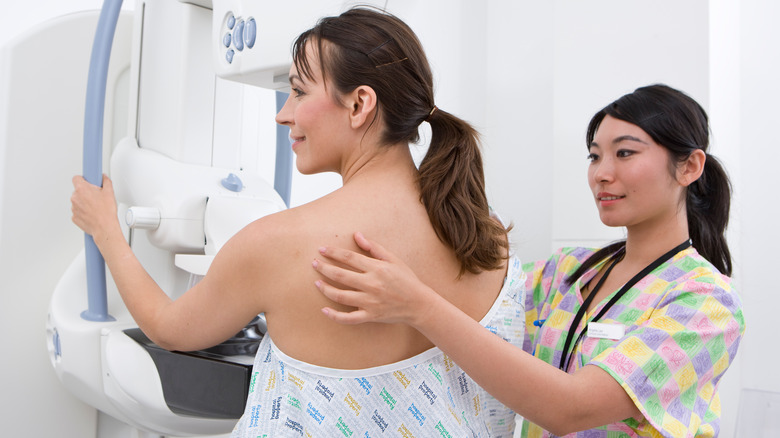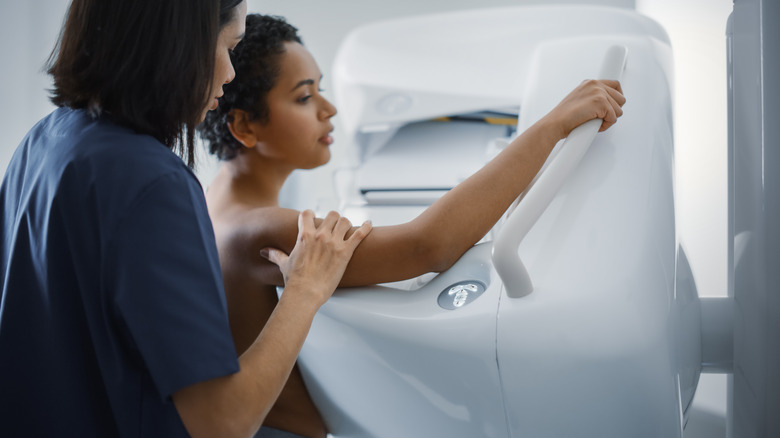When Should You Start Getting Mammograms?
Most people know that mammograms are useful screening tools for detecting breast cancer, but not everyone knows when you should start getting them.
Mammograms are most often used to screen for cancer, meaning women have them on a regular basis even though they may not be experiencing any symptoms, as per Cancer.gov. Mammograms can also be denoted as diagnostic mammograms in which you may have some concerning symptoms which may be breast cancer like pain, discharge, or skin changes, so a mammogram is performed to look for troublesome findings.
Doctors can find lumps and calcifications on mammograms before they can be felt during a breast exam. According to the National Breast Cancer Foundation, sometimes the lumps or shadows on mammograms are cysts or other benign conditions, but they can also be cancer. Suspicious findings sometimes require further investigation, such as a sonogram or a biopsy.
When breast cancer is found early, it's often easier to treat and has less potential of spreading to other organs. That's why mammograms should be performed regularly.
Official recommendations from major organizations differ
The recommendation as to when to first begin having regular mammograms differs between lead agencies on whether to start mammograms at 40 or 50, and to have them each year or every other year.
The National Comprehensive Cancer Network (NCCN) released new guidelines in July 2022 stating that all women should have an annual mammogram starting at age 40 (via Breastcancer.org). According to Dr. Therese Bevers, who is a leader on the panel that wrote the latest guidelines, "There are many, often conflicting, recommendations surrounding breast cancer screening, which causes a lot of confusion and apprehension." Bevers says, "These are the latest, evidence-based guidelines from experts in the field of breast cancer screening and diagnosis from more than two dozen leading cancer centers in the United States."
The American Cancer Society believes a mammogram should be an option every year for women between 40-44, and advises women between 45-54 to get one every year.
The United States Preventive Services Task Force, composed of doctors and medical experts, last updated their official recommendation in 2016 and recommended women get a mammogram every other year starting at 50.
It all comes down to you and your doctor
Every person has a different personal medical history as well as a family history. Though there are discrepancies between when women with no health issues should begin having mammograms, it's wise to discuss screening with your doctor at age 40.
There are also some circumstances that may require you to start screening earlier. This includes a family history of breast cancer, prior radiation therapy treatments, dense breasts, or having the BRCA1 and BRCA2 genes, as per CDC.
The Mayo Clinic believes that when to start screening largely depends on what you and your doctor decide and agree on. They state, "When to begin mammogram screening and whether to repeat it every year or every other year, it is a personal decision based on your preferences."
"Everyone with breasts carries some risk of breast cancer, so the key is to know your risk," says Dr. Therese Bevers. "Most women with average risk should get screened every year, beginning at age 40, but if there are additional risk factors present, a provider might recommend an earlier start."


